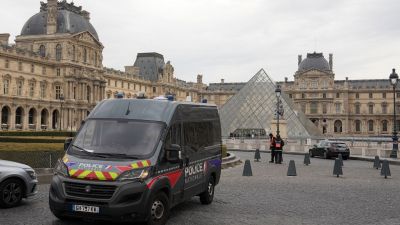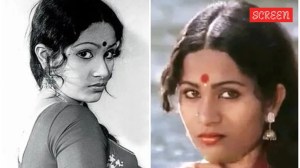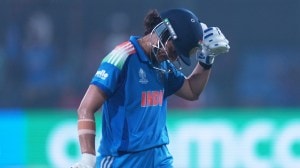Past Passe
The old gets a modern twist in the hands of India’s traditional, skill-based artists. But why are they still second to modernist biggies?

The old gets a modern twist in the hands of India’s traditional, skill-based artists. But why are they still second to modernist biggies?
When raj kumar koram from Kondangaon village in Bastar had his first solo at Mumbai’s Sakshi Art Gallery in 2007, it was a revelation for discerning collectors. Here was an artist following a traditional method of carving but giving it new meaning. In Korma’s carvings on wood, are narratives of everyday life, like mamma going to market or the woodcutters working in the forest.
Koram is one of the more popular indigenous artists in India. His sculptures sell at approximately Rs 80,000 and going by current price tags, it certainly is more ‘affordable’. But in the hierarchy of the art world, traditional artists like him definitely come second to the Contemporaries—artists like Subodh Gupta, Jitish Kallat and Bose Krishnamachari, whose oeuvres speak of the here and now, with media images and installations that are ideational rather than skill-based. “The overall interest in art has benefited indigenous art too. Raj is only a few exhibitions old so his prices will reflect those of a younger artist. Having said that, the exposure that city-based artists get is much more and the class dynamics are constantly in play,” says Usha Gowde, sales manager at Sakshi Art Gallery.
Australia-based art critic Chaitanya Sambrani, who included Koram’s sculpture in Edge of Desire, a path-breaking traveling exhibition that premiered at the National Gallery of Modern Art in Delhi and Mumbai and Australia from 2005 to 2006, finds in his work a “distinct departure from tradition.” “It is remarkable that Raj Kumar’s pillars, though derived from a funerary tradition, are autobiographical. They memorialise his own experience,” he says.
The operative word is ‘departure,’ since it is imperative for artists to innovate rather than continue in the groove of tradition. And traditional artists are doing just that. A case in point is the collaborative show by artists Prakash Bhende and Rupali Madan. Bhende is from Ellora in Maharashtra and his works revive the fresco-style painting of the Ajanta-Ellora caves. Madan carves sculptures out of rock and is one of the few women sculptors to follow this tradition. Together, the artists created a three-dimensional experience that evoked the caves art of 5th and 6th century B.C. in an exhibition that premiered at the Artist’s Centre at Kala Ghoda in June. Their work was well received, but they did not get the publicity or price that most artists command.
Bhende is a self-trained artist and had as his mentor senior painter M. Ketkar from the J.J. School of Art. Accessing the rarified spaces of high art proved so difficult for him that he supported himself by working as a textile designer for Garden Vareli. Madan found her way into art circles as a potter. Since she was not a ‘trained’ artist, the sculptor could not qualify for the National Awards but she went on to study at KPJ Prabhu Artisans Training Institute, Jogardaddi, Bangalore. “Working in stone is very difficult, from finding the right stone to giving that finishing stroke. It’s time-consuming,” says Madan.
Time-consuming methods are not for the Contemporaries who work at a hectic pace, which is why some of the traditions are hard to follow. Swarna and Manu Chitrakar are a brother-sister duo of nomadic artists following the tradition of the Midnapur artists of West Bengal. They hold no fancy art degrees and it has taken an artist like Archana Hande to discover their talent. Hande’s collaborative work with the Chitrakar painters through a video art project, that showed at Gallery Chemould and NGMA in Mumbai, showed how the artists, perceived as traditionalists, have assimilated and projected current themes and concerns, from films like Titanic to the war in Afghanistan. “We sing before our paintings in the traditional way but the stories we tell are of today’s world,” says Swarna, who performed at the NGMA.
Artist Chintan Upadhyay works with traditional miniature painter Manish Sharma, who paints the miniatures on the former’s famous Cloned Babies. Upadhyay has an interesting take on revivalism: “Revivalism of any kind has a political agenda. In the 1940s, it was with the Swadesi movement and now it is the enforced identity of being Indian in a global scenario—it is exotic. One must look at ideas of tradition in tongue-in-cheek ways. The search is for an identity which is invented and not enforced.” While Sharma plans his own solo, a collection of 100 boxes that contain relics from havelis in his hometown Jaisalmer, Upadhyaya will hold an exhibition at the Ashish Balram Nagpal Gallery with his signature style babies in cages. “We are now brand India and this is my pet shop of exotic designer babies,” he says.
No surprises as to who will be in the spotlight.
LOOKING BACK
*Revivalism was once dubbed by Moderns like F.N. Souza and M.F. Husain of the Progressive Artists Group (PAG) as seeing life through the rear-view mirror.
*After Independence, the art world split into two camps. One reclaimed modernism giving it an Indian flavour, like the PAG group. The Bengal school at Santiniketan, was revivalist in nature.
*Artists like Binod Bihari Mukherjee, the three Tagores, Rabindranath, Abanindranath and Gaganendarnath, wanted to reclaim past glory.
*The Tagores and Mukherjee created artwork that recalled the great Rajasthani miniatures.
*Painter Jamini Roy kept alive the Kalighat patas while bringing his own elements of modernity to the traditional approach.





- 01
- 02
- 03
- 04
- 05


























